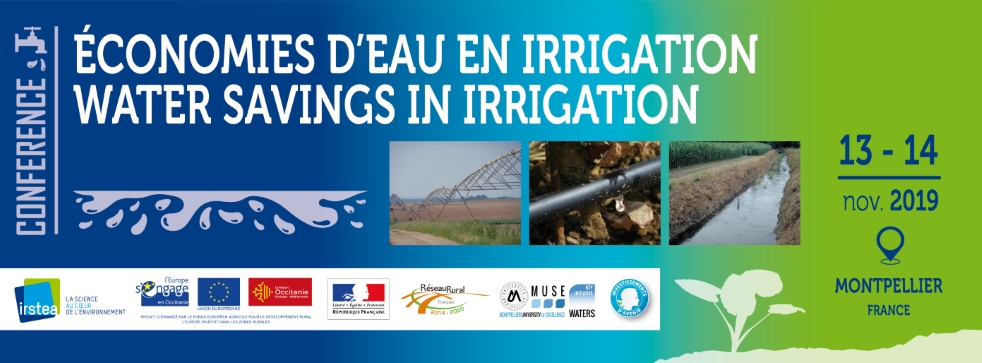In order to reduce irrigation water withdrawal, the European Commission, via the EAFRD (European Agricultural Fund for Rural Development), provides grants to farmers for investments in irrigation techniques that save water (European Regulation No. 1305/2013 - Article 46, point 4). However, little is known about the real extent of water savings at plot scale resulting from change in irrigation application equipment or the adoption of scheduling devices in a given agro-pedo-climatic context.
A study commissioned by the French Ministry of Agriculture, entitled “Plot level assessment of potential water savings achievable through the modernization of irrigation systems” was carried out by IRSTEA (French National Research Institute of Science and Technology for Environment and Agriculture). It aimed at evaluating water savings achievable by switching from sprinkler to localized irrigation system or by using soil hydric status probes. For this purpose, researchers compiled all available studies conducted over the past 30 years on the French metropolitan territory. Nearly 100 records were collected from experimental field trials representative of a wide range of pedo-climatic conditions and crops (field crops, fruit and vegetable production). Each record represents the water consumption of two different irrigation systems (sprinkler system vs localized system) or two scheduling systems (without soil probe vs with soil probe) at plot scale and is used to assess the water saving made when comparing the most water consuming system to the least consuming one.
Results show that (1) Water savings are highly variable, ranging from 0% to more than 75% of the initial consumption. (2) Water savings made with localized systems, when compared to sprinkler irrigation, significantly decrease when the hydric deficit of the cropping season increases and when soil water holding capacity rises. (3) Water savings obtained with irrigation scheduling using soil probes (when compared to scheduling without probes) seem, on the contrary, not to be influenced by hydric deficit and soil water holding capacity. The type of soil probe (tensiometric or capacitive) used has no influence on the water savings obtained.
This study highlights that water savings obtained with localized irrigation systems are highly dependent on pedo-climatic conditions, whereas those obtained with soil probes are not. From a climate change perspective, with the aim of of water saving and water extraction limitation, it is important to keep in mind that water savings potentially achievable by switching from sprinkler to localized system may be limited, even impossible, in extremely dry years. On the contrary, managing irrigation with soil probes may offer potential water savings that are less dependent on climatic conditions. Therefore, to promote water savings, it would seem advisable, that along with investments in water saving equipment, the improvement of irrigators' practices and, in particular irrigation-scheduling tools, should also be encouraged.
This frame of reference for irrigation water savings can guide public policies encouraging and financially supporting the implementation of water saving systems, not only on the subject of irrigation devices, but also on irrigation scheduling tools.



